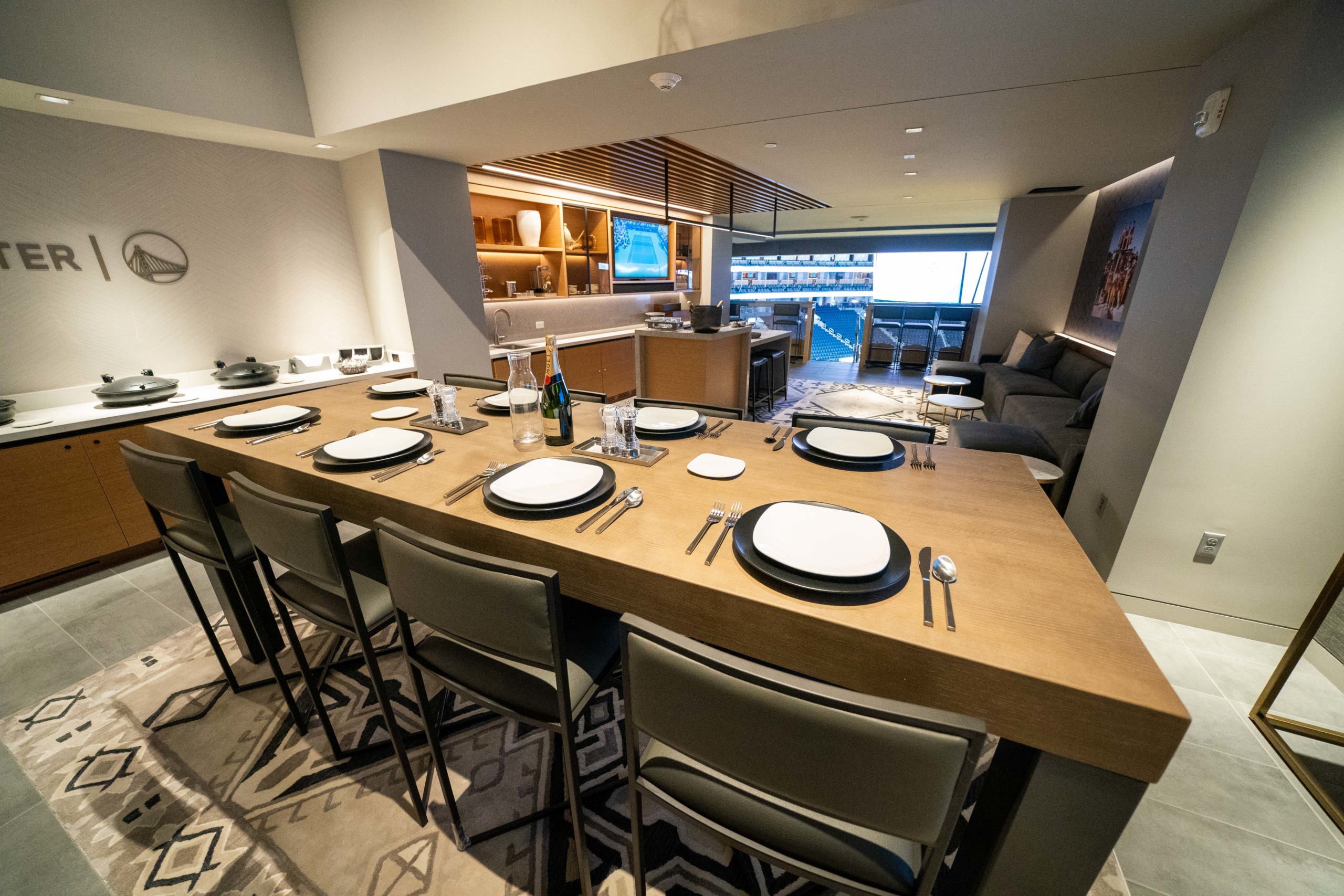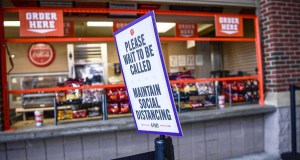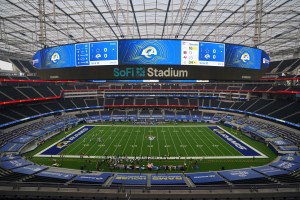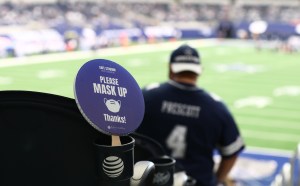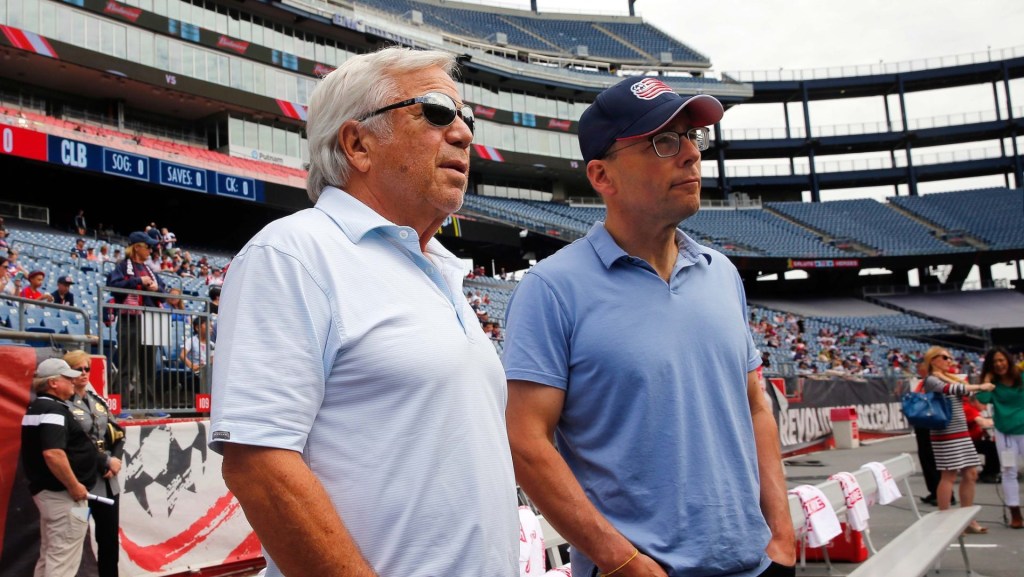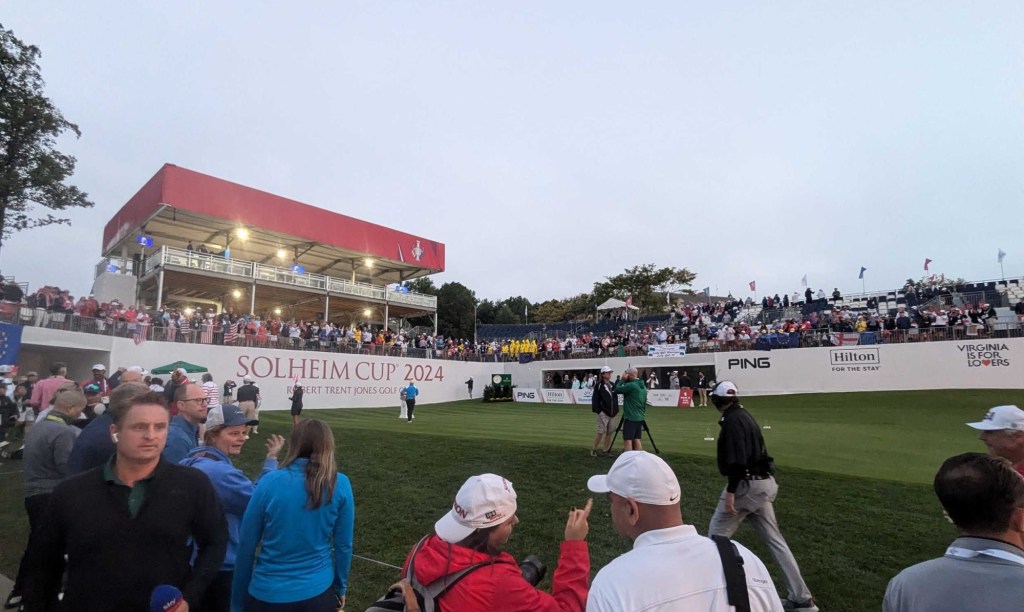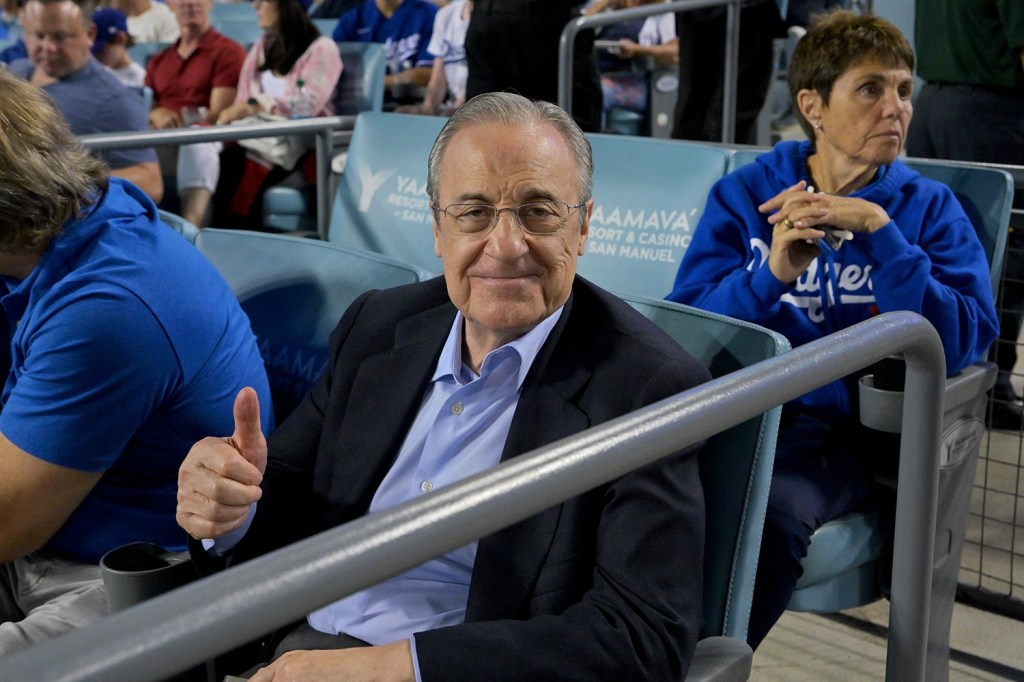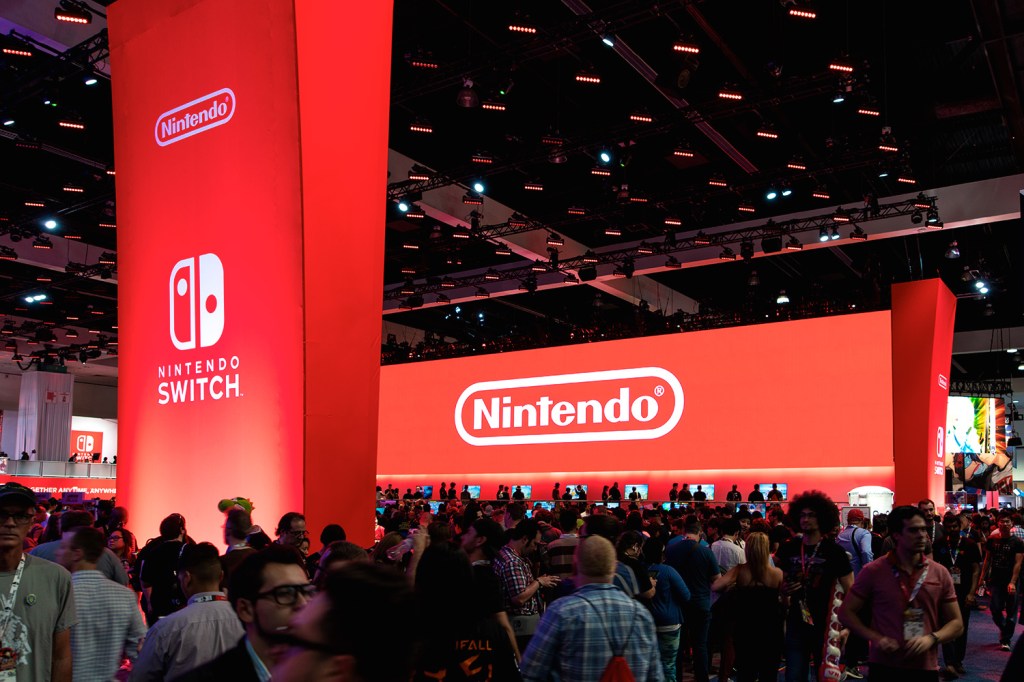Right now, one of the most valuable areas within U.S. stadiums is attracting few, if any, visitors: suites.
Outside of shared revenue from TV deals, merchandise licensing and national sponsorships, the LA Times reported in 2017 that the biggest source of recurring revenue for the Los Angeles Chargers and Rams at the new SoFi Stadium will be leases for their 275 luxury suites. Each team could make upwards of $56.3 million annually from their suites per the LA Times’ estimates.
When the Texas Rangers opened up Globe Life Field for the first time this summer, they — like the Chargers and Rams — had high hopes for clients occupying their suites. By the time it debuted, the general public wasn’t allowed in the stadium due to the ongoing coronavirus pandemic. Rangers’ employees, however, were — and they had plenty of room to spread out.
With special approval from MLB, team employees were in attendance for the last game and the spacious design of the new ballpark made social distancing a breeze, according to Rob Matwick, Rangers executive vice president of operations. Despite having a smaller capacity than the old Globe Life Park — and with fewer traditional suites — the increased group and common food and beverage areas provided the organization the ability to spread out.
The increase in these flexible, more open seating areas is an evolution from the traditional stadium seating as fans are generally, at least anecdotally, gravitating away from at sporting events. Beyond the trend, Matwick has always subscribed to the theory that groups can sustain a team in down years.
“Rotary clubs or Kiwanis, little leagues or churches, they might come a half dozen times a year, but years the club or box office is struggling, these groups just want to be together,” Matwick said.
Along with open common areas, Globe Life Field also features suite areas that are subdivided with moveable partitions that can range from 14 groups of 30 to one big gathering of up to 420.
The expanded options for seating — beyond the traditional suites and stadium rows — has been a long-time coming, said Pat Ryan, co-founder ticket sales strategy company Eventellect. It was a trend that really started about a decade ago when the Cincinnati Reds took suites that weren’t selling and turned them into a party space targeted at a small business owner, he said.
Party areas and group spaces for the general public might be less lucrative for teams than suites, but they could be a key cog in figuring out how to get a group of 25-year-olds into a single game while utilizing less-than-appealing seats in a building.
“People have been really slow to want to open their eyes to the reality that an upper deck seat in row 20, seat nine is a horrible experience,” Ryan said. “For an NBA fan, there’s maybe 10 games a year it’s fine with a great atmosphere, another 10 it’s so cheap I don’t mind crawling up there. But most games, why in the world would I go up there?”
“The NFL started seeing it five years ago, when HDTV had full adoption and upper deck customers would get home and see replays and ask themselves, ‘What am I doing?’ Those seating products haven’t made sense in a while,” Ryan added.
The easy solution? Take out the last six rows of seating and turn them into a party platform, recreating a sports bar in the arena and priced reasonably to attract selling single-games to a younger demographic rather than the older season ticket customer.
“Not only is that easier once you crack the code, the yield is way better,” Ryan said.
As the Rangers built out their new ballpark to be smaller — 16.2% smaller, with a capacity just over 40,000 — Matwick said the rationale was pretty simple: 3 million fans a season is the gold standard. Divide that by 81 and it’s 37,037 fans.
“It’s demand and function,” Matwick said. “Do we really need 50,000 seats in a baseball stadium when the objective is 37,000? Do we need to look at 13,000 empty seats? We can pull the seats closer to the field, diversify options with the seats we offer. So no matter where you are, there’s a great view and a great experience with these areas we offer for whatever you’re looking for.”
While there might be a trend of downsizing in stadiums and arenas, there will still always be a need for a significant number of fans to provide the atmosphere to keep the high-paying luxury customers still coming to the game.
Three hours south of Globe Life Field rests another developing sports facility: Austin FC’s soccer-specific stadium. At roughly 60% completion, Austin FC’s future home is expected to be done in time for the club’s MLS debut next spring.
When Austin FC finally does welcome fans, there won’t be any vacancies in the venue’s suites, team president Andy Loughnane said. By Aug. 31, the organization sold out of season ticket memberships as well as all of its suites in the 20,500-seat venue in Austin. Loughnane is even considering adding as many as 1,500 additional seats to the stadium.
Being 100% privately owned, Loughnane says that the annual lease price paid for the stadium included access to food and beverage. Despite the COVID-19 outbreak, it has had no effect on how the club is approaching this essential part of the fan experience.
“We have the benefit of some time to appropriately react to other industry best practices that may be created across the next couple of months,” Loughnane said. “We neither want to oversteer nor understeer as it relates to important elements like food service and the stadium. So right now, we can afford to remain patient and we’re going to — when we’re opening — have the best possible service, including our suite service.”
As new venues are built, Ryan sees a trend toward designing them more like casinos — and not just with the sportsbook aspects built in. He said the high rollers spending $5,000 to $25,000 a night on a skyvilla and playing blackjack in a private room is what allows Las Vegas resorts to offer cheap standard rates. It’s a symbiotic relationship, however, and those high rollers wouldn’t be there without the action on the casino floor.
It’s much the same at a sporting event where the courtside seats, luxury boxes and bunker suites can ultimately finance whatever experience is to be had in the upper deck.
“At the end of the day, if you lose a pair of courtside seats because they don’t want to look at an empty upper deck, you could have comped an entire section that very night and it’d be less costly,” Ryan said. “I understand why teams have taken upper deck seats from $10 to $30, many nights that market is there, but it diminishes the value of courtside.”
At the one-year-old Chase Center in San Francisco, there was an emphasis on adding multiple premium suite options with different amenities, Nick Bisho, Golden State Warriors vice president of suite sales & service, said in an email. From the Google and Accenture Courtside Lounges with a butler to the 600-square-feet Oracle Club Suites and the four-person Tanduay Theater Boxes, Bisho said they’re all key to offering a high-end experience for fans.
Those options make up just 1,356 of Chase Center’s 18,064 overall capacity, but generate approximately a third of overall ticket revenue.
Bisho did note the organization aimed to create a premium experience for all fans with the Modelo Cantina, a large sit-down experience that takes up a significant chunk of Chase Center’s upper deck.
Along with reimagining an upper deck arrangement, Ryan said the legalization of sportsbooks will have a lasting effect on the industry. Rather than have a sportsbook operator pay $20 million for a partnership, they could help make a capital project a reality and not only make a venue more attractive, but create a revenue generating asset for themselves.
The pandemic has only expedited the diversification of spaces within arenas and stadiums.
“This happens with pandemics and wars, certain trends get accelerated five to 10 years,” Ryan said. “The upper deck being a non-viable product will be accelerated now.”
While the pandemic is allowing stadium architects and developers the opportunity to be creative with their active and finished projects, it has also confronted them with the reality that some aspects of the suite experience will never return to normal.
Jon Niemuth remembers a time in which suites would boast novel-length menus ranging from 20 different craft beers to custom-made sandwiches created for large crowds. As more spectators come back to entertainment events, the director of AECOM Sports – Americas doesn’t envision those abundant food-and-beverage options being welcomed back at suites or concessions stands.
“We’re trying to avoid lines and we’re trying to avoid congregation,” Niemuth said. “Right now, the worst thing we can do is create crowds. We’re trying to make sure the buildings can operate without inadvertently creating crowds.”
Logan Gerken, vice president and general manager at Mortenson, acknowledges the importance of suites, but that change is coming to that concept.
In the past, suites were relatively claustrophobic in terms of space and limited to just the in-game experience. In the aftermath of the pandemic, Gerken sees a future in which suites are not only more socially distant and varied in their seating structure, but can be utilized for more than just entertainment.
“Suites in general are a decreasing trend,” Gerken said. “We will always continue to have suites, but we’re certainly not building out as many as we were in the past. Instead, we’re looking at the [suites] and how they can be multipurpose in nature.”
